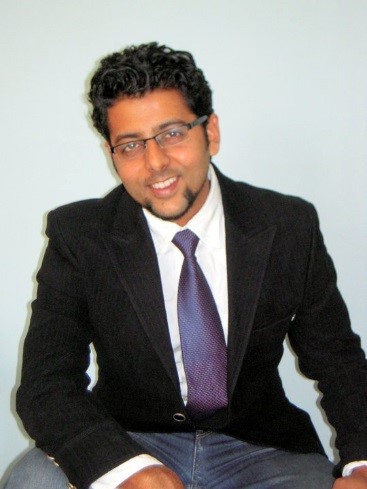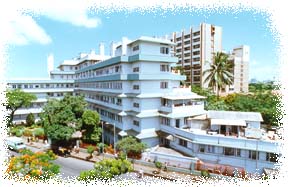Achieving Market Access in India – Are You Hitting the Mark? An Interview with Marksman Healthcare Solutions CEO Dr. Amit Dang
July 10, 2014
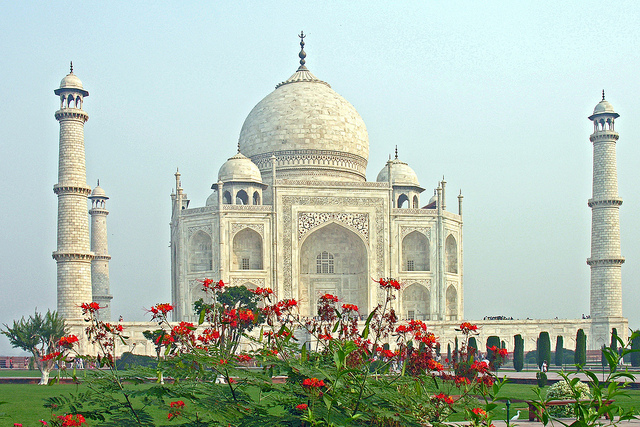
According to McKinsey & Company’s report “India Pharma 2020: Propelling Access and Acceptance, Realising True Potential”, several characteristics make the India pharma market unique, including the domination of branded generics (70-80% of the retail market), strong position of local players in formulation development capabilities, low price points, and intense competition. And while India may be ranked 10th globally in terms of sales, it is within the top 3 in terms of volume.
The India pharma marketplace is ripe with challenges and opportunities. The legislative arena is complex, the competitive field is challenging and intense, and the value messaging to decision-makers and payers is multi-faceted. We spoke with Dr. Amit Dang, MD, Founder and CEO of MarksMan Healthcare Solutions based in India to get insight into this unique market. MarksMan Healthcare Solutions is an international knowledge-based Health Economics and Outcomes Research (HEOR) consulting firm focused on the value of real-world data to maximize the opportunities for pharma and medical device products during a decision making process. Marksman HealthCare Solutions comprises a team of medical professionals, evidence analysts, experienced medical writers, economic modelers, HEOR consultants and project managers who provide cost-effective solutions to achieve optimal access for products in the India marketplace.
My interview with Dr. Dang is below.
[HealthEconomics.Com] Please describe the India healthcare system, including overall health expenditures, percent of GDP, universal vs private payer healthcare provision, out-of-pocket spending, and major public and private stakeholders.
[Dr. Dang] India has a dual system of health care: a public tax-based sector where the health care providers are salaried by the government, and a private free-of-service based sector where the money is paid out-of-pocket by individual households.
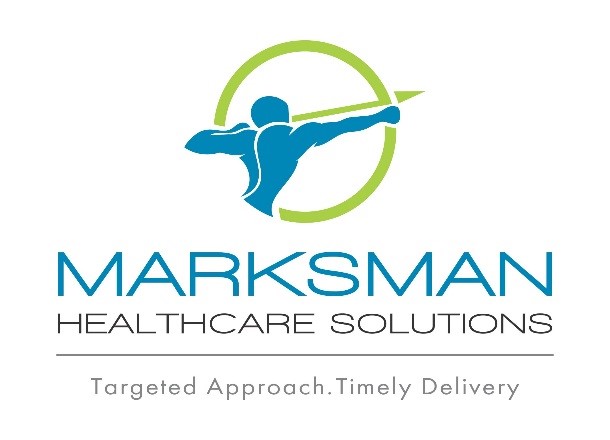
The private healthcare sector is structured similarly, but is more concentrated in larger cities and towns than in the periphery. Though the private healthcare sector is significantly more expensive, it is generally viewed to be more popular than the public healthcare sector. The reasons for this include poorer quality, excessive crowding, an unfortunate disregard to hygiene and lack of qualified staff in public hospitals. Because of the government’s failure to deliver quality care, there has been a rapid expansion in the private sector. It is estimated that the private sector accounts for 93% of all hospitals (which was only 8% in 1947), 64% of all beds, and 80%-85% of all doctors.

The total health expenditure (% of GDP) in India was 3.87 as of 2011, out of which public and private sector expenditure (% of GDP) was 1.20 and 2.67 respectively. The comparable rates for public health are 1.5% in Sri Lanka, 2.7% in China, and 3% in Thailand.
The public health expenditure consists of recurrent and capital spending from government (central and local) budgets, external borrowings and grants (including donations from international agencies and nongovernmental organizations), and social (or compulsory) health insurance funds. Private health expenditure includes direct household (out-of-pocket) spending, private insurance, charitable donations, and direct service payments by private corporations.
In 2010, out-of-pocket expenses account for 78% of the total healthcare expenditure. This is among the highest in the world, and are much higher than other countries (Thailand: 25%, China: 44%, and Sri Lanka: 55%). Many families are driven below poverty line every year by large medical expenses.
To summarize, most Indians seeking health care have two options: a public health system that is almost entirely free but of poor quality, and a largely unregulated private health system that provides quality healthcare service but is highly expensive, and often indulges in inappropriate or unnecessary diagnostic or treatment modalities.
[HealthEconomics.Com] How is the India reimbursement and pricing environment different or the same as the United States and Europe?
[Dr. Dang] In the US and Europe, most medicines payments are made by the state or health insurance institutions. In contrast, in India most pharmaceutical expenditure is out-of-pocket. This creates a different dynamic for policy enforcement. USA and Europe have clear-cut guidelines for reimbursement and pricing. However, such guidelines are lacking in the Indian set-up.
[HealthEconomics.Com] What are the major pharmaceutical regulations in India as it pertains to pharmaceutical pricing and reimbursement? Who are the major organizations or regulatory bodies that are involved in setting prices and determining reimbursement?
[Dr. Dang] As said before, there is no clear-cut guidelines pertaining to reimbursement and pricing in India. However, in this context, two autonomous authorities function independently of each other: the NPPA and the IRDA.
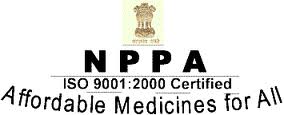
The Insurance Regulatory and Development Authority (IRDA) is a state-controlled, autonomous apex statutory body which regulates and develops the insurance industry in India. The IRDA is responsible for regulating reimbursements pertaining to the health insurance sector.
The state-controlled insurance schemes such as Central Government Health Scheme (CGHS) and Employees State Insurance Corporation (ESIC) have independent reimbursement plans and do not fall under the purview of the IRDA.
[HealthEconomics.Com] What are the major hurdles or goals to reach when obtaining favorable pricing for one’s drug product? Does this differ for certain drugs like orphan products?
[Dr. Dang] As such there is no concept of favorable drug pricing in India as the drug pricing is governed by the Drug (Prices Control) Order (DPCO). Recently, with the objective to improvise and endow with the basic health care and availability of basic medicines at an affordable price across the country, the Department of Pharmaceuticals, Ministry of Chemicals and Fertilizers, notified the Drug (Prices Control) Order 2013 (“DPCO 2013”) in May 2013, which may fluctuate the pricing of 348 essential medicines. The DPCO 2013 provides formula for the calculation of ceiling price of a scheduled formulation as follows:
- Firstly, the Average Price to Retailer of the scheduled formulation i.e. P(s) would be calculated as below:
AVERAGE PRICE TO RETAILER, P(S) = (Sum of prices to retailer of all the brands and generic versions of the medicine having market share more than or equal to one percent of the total market turnover on the basis of moving annual turnover of that medicine) / (Total number of such brands and generic versions of the medicine having market share more than or equal to one percent of total market turnover on the basis of moving annual turnover for that medicine.)
- Thereafter, the ceiling price of the scheduled formulation i.e. P(c) would be calculated as below:
P(c) = P(s). (1+M/100), where P(s) = Average Price to Retailer for the same strength and dosage of the medicine as calculated in step 1 above. M = % Margin to retailer and its value =16
Currently, drug developers in India are receiving no formal incentives from the Government and hence are more focused on developing affordable drugs for more common diseases such as oral insulin, statins for preventing or slowing the progression of cardiovascular disease, vaccines and antibiotics for a number of preventable infectious diseases, etc. Hence, patients with rare diseases in India have to rely on imported drugs from western countries which makes these treatments (even when available) unaffordable. Some Indian Organizations like Organization for Rare Diseases India (ORDI) aim to work between the Government of India and the Pharma/Biotech/Diagnostic industry to enact an Orphan Drugs Act (ODA) that will create incentives for orphan drug developers. Further, a Government frame work is required that is conducive in enabling the manufacturing of orphan drugs in India.
[HealthEconomics.Com] What is the need and acceptance for Health Economics and Outcomes Research (HEOR) on attaining optimal reimbursement?
[Dr. Dang] As per the DPCO 2013, the price to retailer of a new drug, not available in domestic market, will be fixed by the Government of India on the principles of “Pharmacoeconomics” of the new drug, on the recommendation of a Standing Committee of Experts. As HEOR is still in infancy in India, this can be considered as a silver lining in the dark cloud as Government of India is willing to accept principle of pharmacoeconomics for optimal reimbursement on newer drug therapies.
[HealthEconomics.Com] Are risk-sharing arrangements or other methods used to attain market access?
[Dr. Dang] Risk-sharing agreements, under which payers and pharma manufacturers agree to link payment for drugs to health outcomes achieved, rather than the volume of products usedoffer an appealing payment model for pharmaceuticals. In future, the risk sharing concept may be in place. The Government is willing to accept the principles of pharmacoeconomics as per the DPCO 2013.
[HealthEconomics.Com] Is real-world evidence research or are observational studies important in the India marketplace?
[Dr. Dang] Real-world evidence (RWE) infuses clinical and commercial decisions with the insights and scientific proof points crucial to success in today’s healthcare environment. The Indian market is catching up with the principle of health economics and outcomes research (HEOR), thereby demonstrating the value of real-world insights in healthcare decision making.
[HealthEconomics.Com] Is there use of electronic medical records or insurance claims analyses or economic modelling to attain market access?
[Dr. Dang] The use of electronic medical records is gradually developing in India. There are government-sponsored HMIS (Health Management Information System) projects in some of the Indian states which have come up in the last decade. Electronic recording of patients’ information is being practiced in some major corporate hospitals, but these cater to only to a small percent of the country’s population. The Tata Memorial Centre, the national comprehensive cancer centre for the prevention, treatment, education and research in Cancer, which is recognised as one of the leading cancer centres in this part of the world has recently started using e-medical records. As for the insurance claims analysis, though the concept of health insurance has been in India since 1950s, it has picked up only since the past decade. As a result, at this point, we can say that the use of electronic medical records and insurance claims are rarely, if at all, used for economic modelling.
[HealthEconomics.Com] What do you predict for the future of HEOR/Pricing in India in 5 years and 10 years?
[Dr. Dang] The field of HEOR is still in its infancy in India. The most important reason for this is that the health insurance was not considered to be important. However, India’s landscape of health insurance, which was dominated by CGHS and ESIC, has undergone tremendous changes since 2007 with the launch of several new health insurance schemes in the country, largely initiated by central and state governments. The percentage of population covered by a health insurance scheme has accelerated from about 75 million people covered (roughly about 16 million family beneficiaries) in 2007, to an estimated 302 million people in2010, about one-fourth of the population.
With the rising cost of health care in India, and with increase in awareness among the general public, the health insurance sector is expected to grow significantly in the next 5 to 10 years. As a direct result, HEOR is going to play a very vital role in India.
[HealthEconomics.Com] How does your company, MarksMan Healthcare Solutions, approach this challenge? Who are some of your clients and what are some of your successful projects?
[Dr. Dang] MarksMan Healthcare Solutions, established in April 2014, is a budding HEOR consultancy operating in India. Our greatest strength is that we are one amongst the very few HEOR consultancies of Indian origin and operating in India. By virtue of this unique positioning, we aim to offer localised support and strategic working partnership to the established HEOR consultancies based in US/ UK/ Canada, and to grow to be the pioneers in the field of HEOR in India over the next 5-7 years. We have experienced HEOR consultants, health economists and medical writing professionals in our team and are currently in the expansion mode. We offer services including comparative effectiveness research, health economic evaluation, HTA (Health technology assessment) submission and global value dossiers. We also intend to be an active element of ISPOR Indian chapter and HealthNetIndia, and work in close collaboration with other related agencies as well. We also aim to provide high-quality training and to do talent development in the fields of HEOR and pharmacoeconomics, which are still in their infancy stages in India. Our vision is to play a vital role in establishing the complete spectrum of HEOR studies in India, and in that process, contribute to improve the healthcare system in India.
For further information on the India HEOR and market access arena, as well as strategic tools to achieve optimal product value messaging, please contact Dr. Amit Dang, M.D., Founder and CEO, MarksMan Healthcare Solutions, http://marksmanhealthcare.com/, +91-7738389300.
If you or your organization would like to be interviewed for the tHEORetically Speaking blog, please contact HealthEconomics.Com at info@blogsite.healtheconomics.com or contact Dr. Patti Peeples directly at patti@blogsite.healtheconomics.com.

